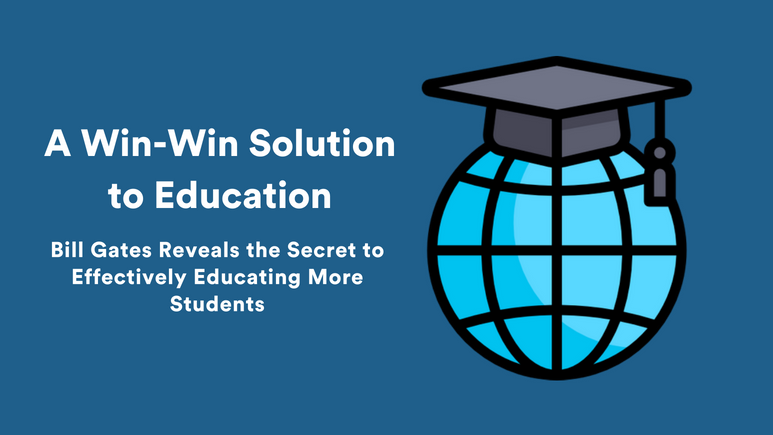
What if you could vastly increase the size of your student body, slash costs, and increase student success rates all at the same time? Sounds too good to be true, doesn’t it?
Well, according to a recent article from Bill Gates, that’s exactly what the University of Central Florida has just done.
University of Central Florida has managed to triple the size of their student body while reducing university expenses and maintaining one of the lowest 4-year-college tuitions in the country.
How did they do it? They embraced technology.
By increasing access to online courses and providing mixed-mode classes that meet both in person and online, UCF was able to serve more students at less cost.
You might worry that this would sacrifice the quality of instruction. But in fact, just the opposite was true.
Data from these mixed-mode classes showed that students tended to perform better in courses with an integrated technology component and dropped these classes less often.
Talk about a win-win!
Now, how could you apply this same approach in your own classroom or school?
Mixed-Mode Learning
The concept of using technology to supplement classroom instruction is not unheard of in K-12 schools.
Blended learning has become increasingly popular over the past decade and has revolutionized instruction in many schools.
Personalized learning platforms allow students to work at their own pace and give teachers time to meet with small groups of students.
But how can you get the most bang for your buck when it comes to incorporating technology into the classroom?
Read on for some quick hits.
Shop Around
There are TONS of digital curricula and programs out there.
So how are teachers to know what’s worth it and what’s not? Edreports.org is a great resource for comparing products.
Every curricula and learning platform goes through a rigorous evaluation based on quality, usability, and standards alignment.
This site includes reviews of both digital and more traditional curricula and is a great way to make an educated decision.
Take Advantage of What’s Free
While there are many individualized learning programs that require a subscription, there are also tons of great ones that are free.
Teachers across the country have built robust blended learning plans using only free resources.
Whether you teach Math, ELA, Typing, or a foreign language there are tons of free sites to get you started.
Set Clear Expectations
Time spent learning digitally is only valuable if students are on task.
It is crucial to set VERY clear expectations of how students should use technology early on.
Set ground rules early, and hold students to them. Otherwise, you can’t be surprised when students spend more time on YouTube than on their lessons.
Provide Choices
The beauty of blended learning is that it is personalized to the learner.
In a college setting, professors can take this to the next level by allowing students to watch a lesson when and where they want.
In the K-12 classroom, there isn’t nearly this much flexibility. But teachers can still find ways to personalize the learning experience.
Consider having a chunk of class time each day that is “flex time” where students have a choice of what platform or digital activity they work on.
You can also let students who’ve shown responsible computer use choose to work at the back of your room in bean bag chairs, or even sitting on the floor if they prefer.
Choice is key in order to ensure that digital learning is both educationally productive and enjoyable for students.
Start a Conversation
Now that the basics of a subject can be covered with videos or other online platforms, as the teacher, one of the best things you can do is to create a conversation around the topic.
You can implement the Socratic method of asking students questions and encouraging them to ask questions amongst themselves to deepen their understanding of the subject.
Or, whether you’re teaching Math or Typing, you can help students understand the relevance of what they’re learning by discussing their real-life applications.
This has been proven to be a crucial element in getting students to be intrinsically motivated to learn.
All in all, with a little planning, you can ensure that technology proves to be a win-win resource for your students.



Leave a Reply